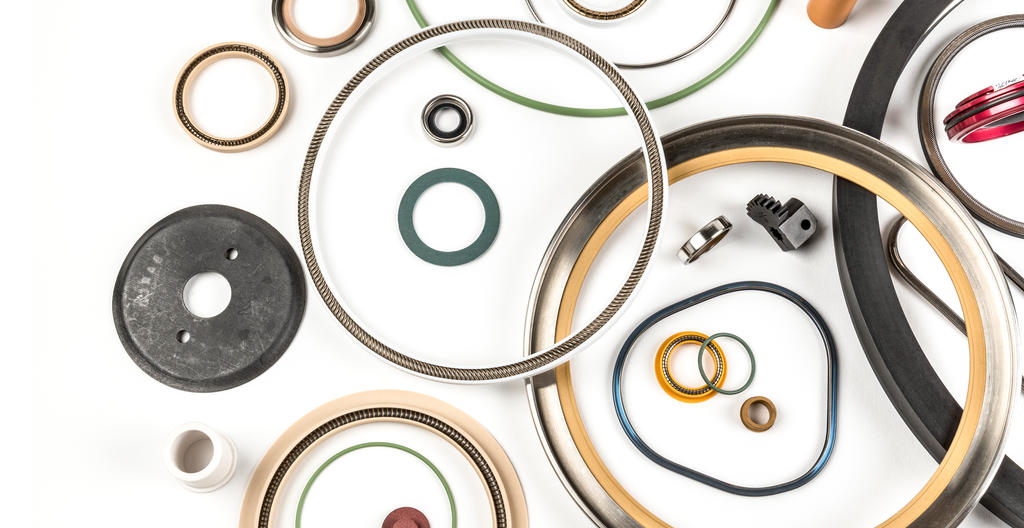
Blogs
Precision Sealing & Material Solutions for Semiconductor Processing
How Polymers Connect Us Every Day
By Thomas La Tempa (November 2022)
Semiconductor devices have become universal and play an integral role in our modern day lives. They shape the way we communicate and interact with the world, provide entertainment and enable many modern conveniences. As more products and services become connected, they have become a strategic priority to prevent supply disruptions and development needs continue to evolve. To meet these ever increasing demands, device manufacturers have begun to push the limits of scaling and introduce new materials and processes, necessitating material innovations for critical semiconductor equipment.
Semiconductor manufacturing is generally divided into two sections; “front-end”, which is focused on wafer fabrication, and “back-end”, which involves the assembly of an integrated circuit. These processes require very high precision, which also translate to the equipment used. In this blog, we discuss the differences between the two, and some of the sealing solutions required for back-end semiconductor processing and their benefits. Many of today's demanding applications require processes in which the equipment capabilities are optimized to provide the highest possible yields at the lowest possible cost.

Brief Overview of Front-End Semiconductor Manufacturing
In an earlier blog, we examined front-end semiconductor manufacturing and the benefits of polymer solutions. The front-end process requires a large number of complex steps to transform a wafer into a finished device. These steps include wafer cleaning, oxidation, and photolithography to pattern devices as well as a series of etching, deposition, doping and metallization steps. Furthermore, inspection and metrology equipment is used for process control. This is when the wafers are inspected to find irregularities that could cause issues with the end-product. Optical techniques are used and e-beam inspection is often required to find the smallest defects.
Our high-performance seals are used throughout this manufacturing process and perform in demanding conditions such as high temperature, aggressive chemical & plasma environment and ultra-high vacuum conditions. Applications include a broad range of chemical vapor deposition, CVD and plasma etch equipment. In addition to the front-end process, we also provide solutions for the back-end process. Let’s take a closer look.
Key Processes in Back-End Semiconductor Manufacturing
Wafer Probe
At this point in the semiconductor manufacturing process, devices are tested to see whether they meet design specifications. As they are still on the wafer, they are tested using micro contacts with the circuits. Probes then measure and translate signal responses with those that fail being repaired or discarded.
Wafer Dicing
Wafer dicing is when the semiconductor is sliced into individual die. Traditionally, this would be done via saw dicing. In recent years, there has been a significant shift to thinner and smaller semiconductor chips, resulting in the development of new techniques such as laser dicing.
Die Bond
The individual die are too intricate and fragile to be handled on their own and as such, they must be safeguarded. Die Bond is the process of securing the die to the substrate. The substrate then serves as the interface between the chip’s microscopic scale and the electronics manufacturing macroscopic scale.
Wire Bonding
The next step is a wire bond process that joins each pad on the die with one on the substrate using a wire, forming an electrical connection. Techniques such as flip chip can also be used.
Encapsulation
To finish back-end semiconductor processing, the bonded die and frame must be sealed. This can be done using a molded plastic compound or by attaching a sealed lid. At this point, the semiconductor part is ready to be used in electronics manufacturing. Final testing can be done before shipping the completed chip.


Semiconductor Sealing & Material Solutions from Omniseal Solutions™
Omniseal Solutions™ engineers and manufactures high-performance wear and sealing solutions that are part of the above back-end semiconductor manufacturing processes, which include a broad range of precision equipment such as SMT Dispensing and Pick & Place Test Handlers. Collectively, our solutions address challenges in the assembly and test processes of back-end manufacturing.
As a global business, we are agile and can provide custom solutions across the entire semiconductor value chain. One of our services is rapid prototyping where the design team generates a prototype and delivers a solution engineered to the strictest of tolerances. Our Omniseal® spring-energized seals and metal face seals are excellent sealing options as they address critical requirements in the equipment industry such as withstanding extreme temperatures and pressures and tolerating corrosive chemicals and other aggressive media. We also offer custom machined parts such as our Meldin® polyimide solutions for bearings, CMP retaining rings, clamp rings, and custom components.
Other benefits include:
• Low wear and friction
• High purity and low outgassing
• Electrical insulation
• Reduction in maintenance and downtime
Our semiconductor and electronics experts are here to help with your application challenges. Contact the team today through request form or live chat!